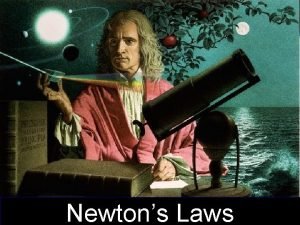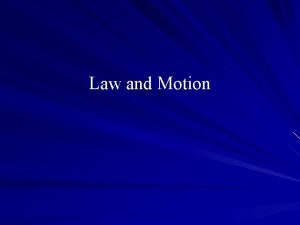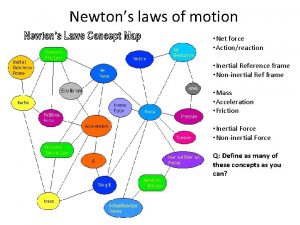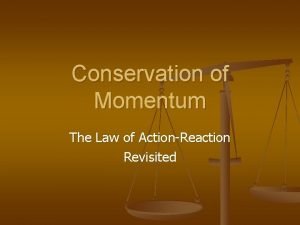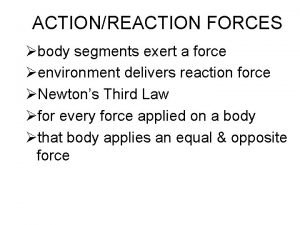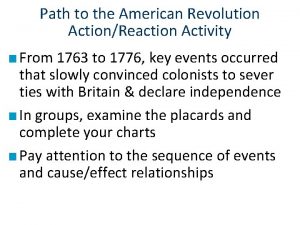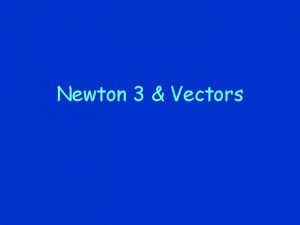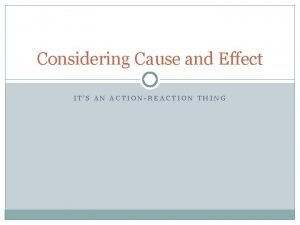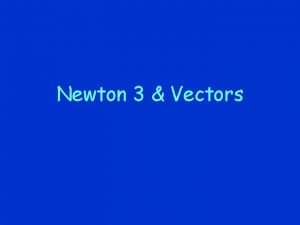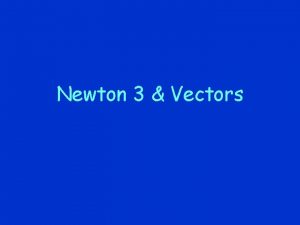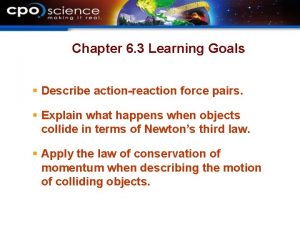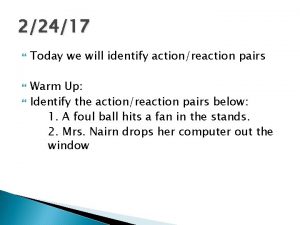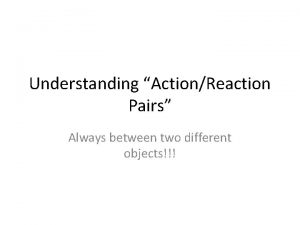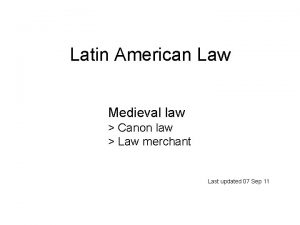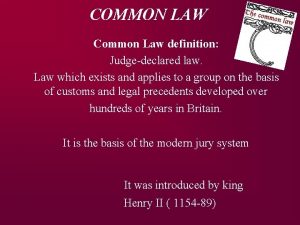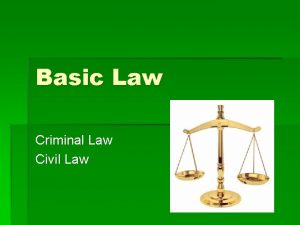Uncle Figgys 3 rd Law of Motion ActionReaction




















- Slides: 20

Uncle Figgy’s 3 rd Law of Motion Action/Reaction

What were the first two again? An object at rest tends to stay at rest, an object in motion tends to stay in motion unless acted upon by an outside, unbalanced force. Force = mass X acceleration

rd 3 Newton’s Law is…

If one object exerts a force on another object, Then the second object exerts a force of equal strength in the opposite direction on the first object.

So, what does that mean? It means for every action (force applied) there is an… Equal and opposite reaction (force applied back)

Newton’s Third Law of Motion If one object exerts a force on another object, Then the second object exerts a force of equal strength in the opposite direction on the first object.

What does this have to do with the 2 nd Law of Motion? What happens if one ice skater (an object) skates into a second skater (another object)? The second skater pushes (AHH, applies a force) back on the first skater with an equal force of the first skater. Both skaters will move – how far depends on each skater’s MASS

The more massive each object the slower it will move after the collision.

Three examples of Action/Reaction in the REAL WORLD Walking – you push on the ground it pushes back on you Birds flying – wings push against the air and the air pushes back on the wing Squids swimming – they push water out of their bodies in one direction and they move in the opposite direction

What can you come up with for REAL WORLD examples?

Equal and opposite but NOT balanced. o Look at page 66 in your text book. o Notice Figure 18 A o The girl is exerting a force on the ball o The ball is exerting an equal force back on the girl o So… each object(girl and ball) is exerting a force on a DIFFERENT object.

Look at page 46 What object is receiving the forces of both kids?

Are they both applying a force to the same object?

Go back to page 66 Are the girl and the ball applying forces to different objects?

MOMENTUM The product of an object’s mass and velocity M=m x v Newton called it “quantity of motion” Mrs. R calls it “how hard it is to stop something that is moving

Practice Problems Go to page 67 in your book Use the correct format for working all problems in this class – Formula – Plug and Chug – Answer with Units

Here it is… M= mv 16 m/s(0. 045 Kg) M=. 72 kgxm/s M=mv. 018 kg(15 m/s) M=. 98 kgxm/s The baseball has a greater momentum.

Law of Conservation of Momentum Conservation – a quantity is the same before and after an event The Law – The total momentum of any group of objects remains the same unless outside forces act of the objects.

What is an outside force that might change momentum? FRICTION

 Studyja
Studyja Newton's first law and second law and third law
Newton's first law and second law and third law Newton's first law of motion
Newton's first law of motion V=k/p
V=k/p Boyle's law charles law avogadro's law
Boyle's law charles law avogadro's law Types of motion
Types of motion Shm
Shm An object in motion stays in motion
An object in motion stays in motion Chapter 2 motion section 1 describing motion answer key
Chapter 2 motion section 1 describing motion answer key Chapter 2 motion section 1 describing motion answer key
Chapter 2 motion section 1 describing motion answer key Section 1 describing motion
Section 1 describing motion Describing motion worksheet answer key
Describing motion worksheet answer key Motion section 1 describing motion
Motion section 1 describing motion Do you capitalize aunt
Do you capitalize aunt Sarah's uncle's car was found
Sarah's uncle's car was found Chapters 4-7 to kill a mockingbird summary
Chapters 4-7 to kill a mockingbird summary The chrysalids summary
The chrysalids summary This little piggy went to the market meaning
This little piggy went to the market meaning Uncle rudi
Uncle rudi Sigmar polke bunnies
Sigmar polke bunnies Me and uncle romie
Me and uncle romie
